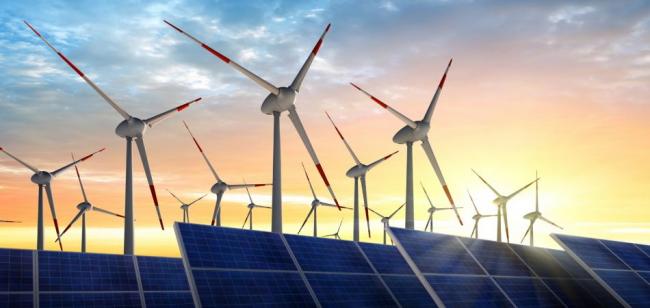Saturday, 20/12/2025 | 00:07 GMT+7
This is according to the latest figures from BloombergNEF (BNEF) in its just published Energy Transition Investment Trends report. BNEF’s analysis shows that companies, governments and households invested $303.5 billion in new renewable energy capacity in 2020, up 2% on the year, helped by the biggest-ever build-out of solar projects and a $50 billion surge for offshore wind. They also spent $139 billion on electric vehicles and associated charging infrastructure, up 28% and a new record.

This year BNEF compiled what it calls a new, broad measure of ‘energy transition investment’. Previously focused on renewables, the report now includes investment figures for a wider scope of transition areas, including energy storage, electrified vehicles and heating, hydrogen, and carbon capture and storage. It also covers thematic highlights such as the rise of green finance, performance of clean energy stocks and investment by oil majors.
Overall spend on renewable energy was up 2% on 2019, helped by the biggest-ever build-out of solar projects and a $50 billion surge for offshore wind. Domestic installation of energy-efficient heat pumps came to $50.8 billion, up 12%, while investment in stationary energy storage technologies such as batteries was $3.6 billion, level with 2019 despite the continuing drop in the unit cost (due to falling technology costs). Albert Cheung, head of analysis at BNEF, said: “Our figures show that the world has reached half a trillion dollars a year in its investment to decarbonize the energy system. Clean power generation and electric transport are seeing heavy inflows, but need to see further increases in spending as costs fall.”
Global investment in carbon capture and storage (CCS) tripled to $3 billion, and that in hydrogen was $1.5 billion, down 20% but the second-highest annual number to date. Cheung added, “Technologies such as electric heat, CCS and hydrogen are only attracting a fraction of the investment they will need in the 2020s to help bring emissions under control. We need to be talking about trillions per year if we are to meet climate goals.”
A geographical split of BNEF’s energy transition investment data shows that Europe accounted for the biggest slice of global investment, at $166.2 billion (up 67%), with China at $134.8 billion (down 12%) and the U.S. at $85.3 billion (down 11%). Europe’s impressive performance was driven by a record year for electric vehicle sales, and the best year in renewable energy investment since 2012.
Jon Moore, chief executive of BNEF, said: “Overall investment in wind and solar has been robust and electric vehicle sales jumped more than expected. Some 54% of 2016 emissions are now under some form of net-zero commitment, up from 34% at the start of last year. This should drive increasing investment in the coming years.”
2021 is considered a critical year for low carbon transition, with the delayed climate negotiations from 2020 providing countries with the opportunity to raise climate mitigation ambition (including renewable energy deployment), to align economic recovery efforts with the goals of the Paris Agreement.
Teresa Ribera, Deputy Prime Minister of the Government of Spain and Minister of Ecological Transition and Demographic Challenge, will be President of the annual IRENA Assembly currently convened in Abu Dhabi. Speaking on the opening day, marked as World Energy Transition Day, she said: "“We are all well aware of the pressing need to change gears towards a sustainable energy future: with over 70% of GHG emissions coming from this sector, the energy transition plays a key role in managing the global climate emergency.”
Forbes








 Webinar 2: “Financial Support for Energy Efficiency Enterprises – Opportunities and Challenges”
Webinar 2: “Financial Support for Energy Efficiency Enterprises – Opportunities and Challenges”
 Vietnamese enterprises achieve green growth and cut costs through energy efficiency
Vietnamese enterprises achieve green growth and cut costs through energy efficiency
 Capacity Building for Program Implementing Entity
Capacity Building for Program Implementing Entity
 Enhance Energy Efficiency Knowledge for Managers of Cement Industrial Enterprises
Enhance Energy Efficiency Knowledge for Managers of Cement Industrial Enterprises
 Promoting Energy Efficiency for Technical Staff of Brick and Ceramic Sector
Promoting Energy Efficiency for Technical Staff of Brick and Ceramic Sector
 Capacity building for participating financial institutions of the VSUEE Project
Capacity building for participating financial institutions of the VSUEE Project
 Capacity building for participating financial institutions in Ho Chi Minh City
Capacity building for participating financial institutions in Ho Chi Minh City